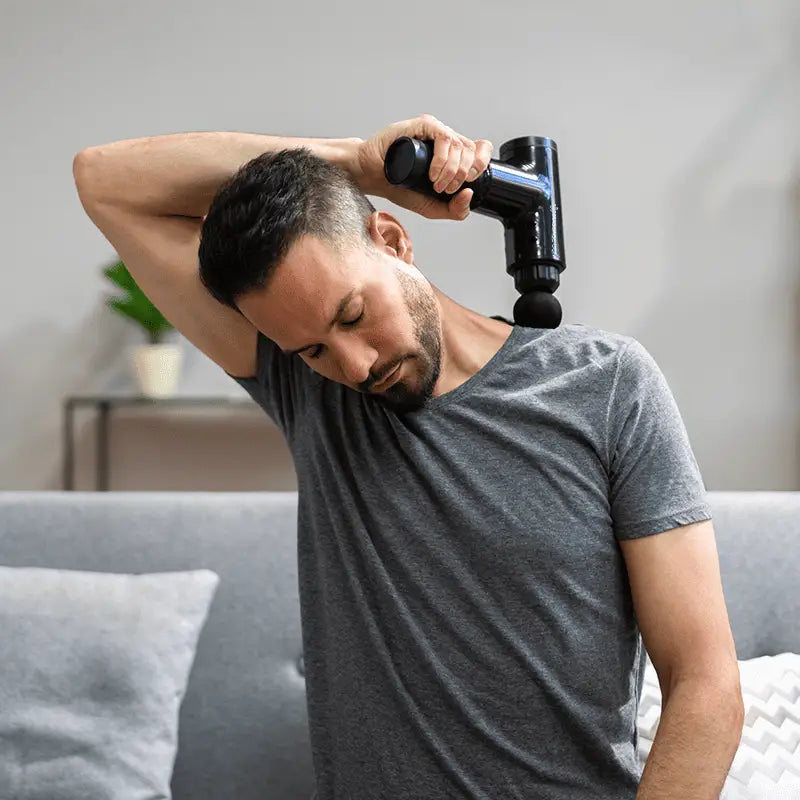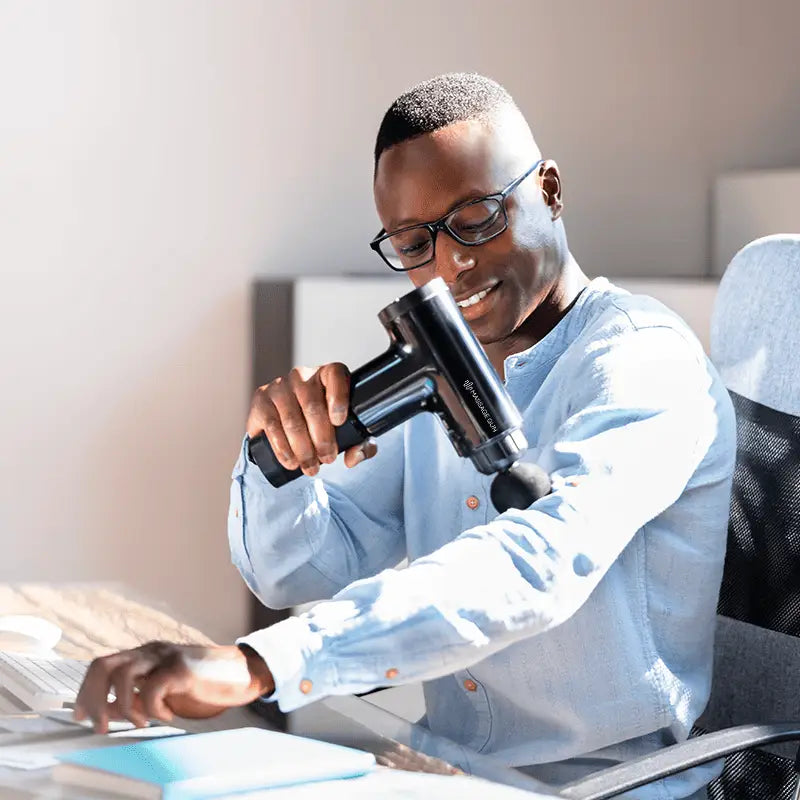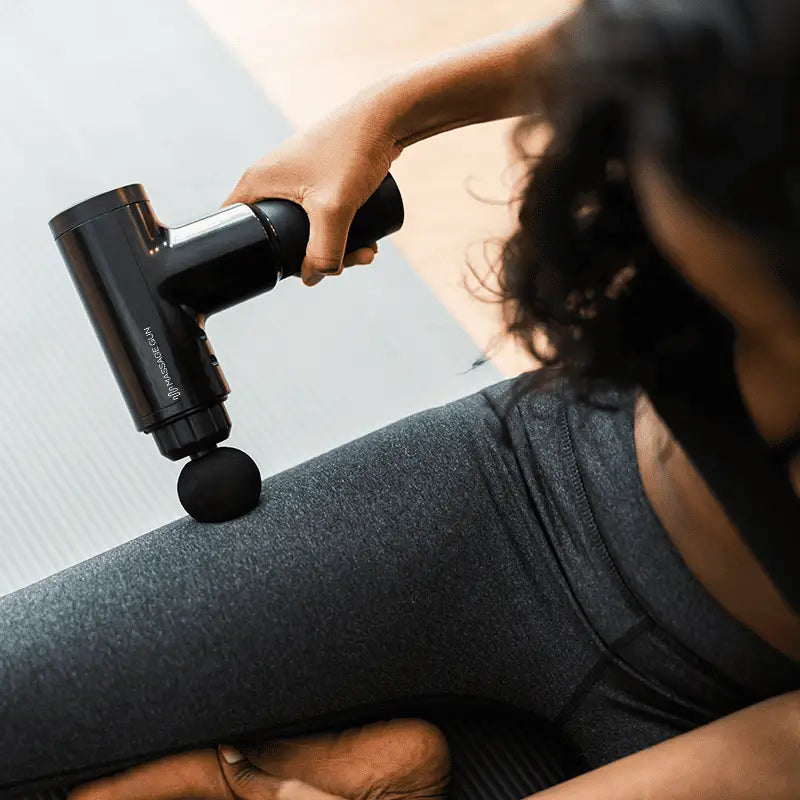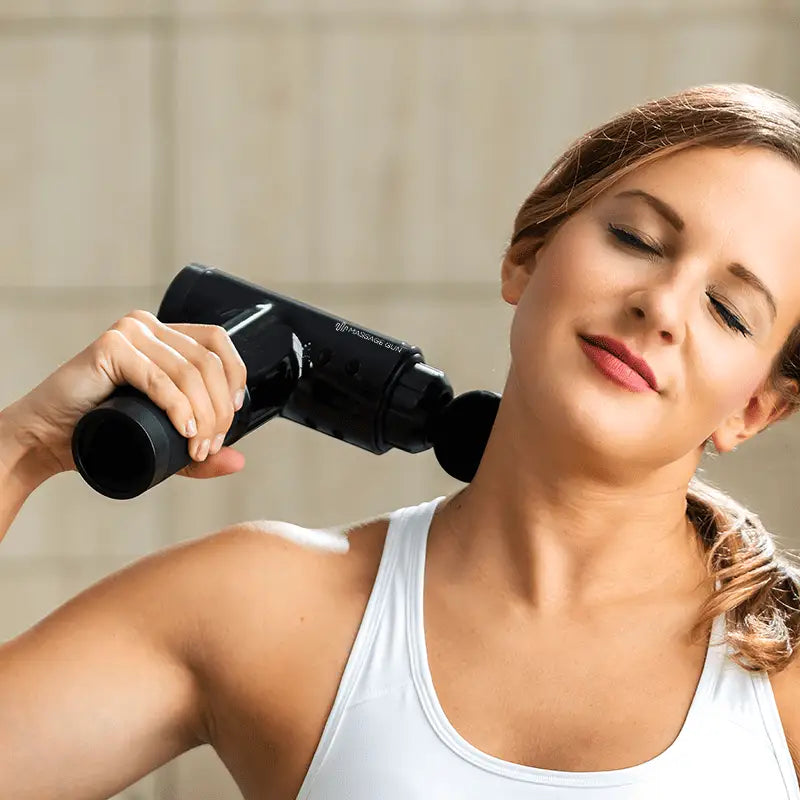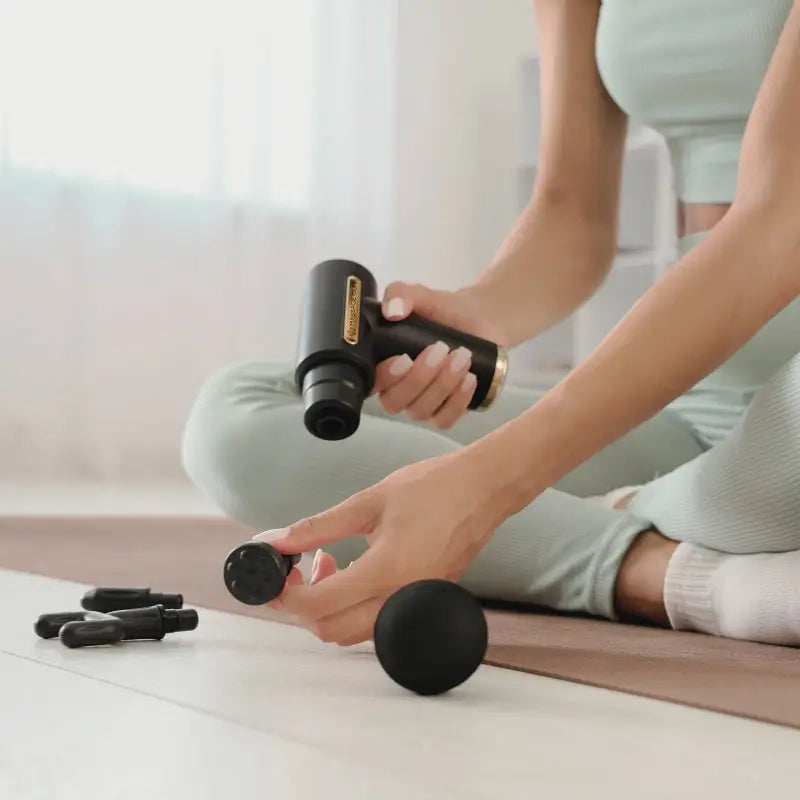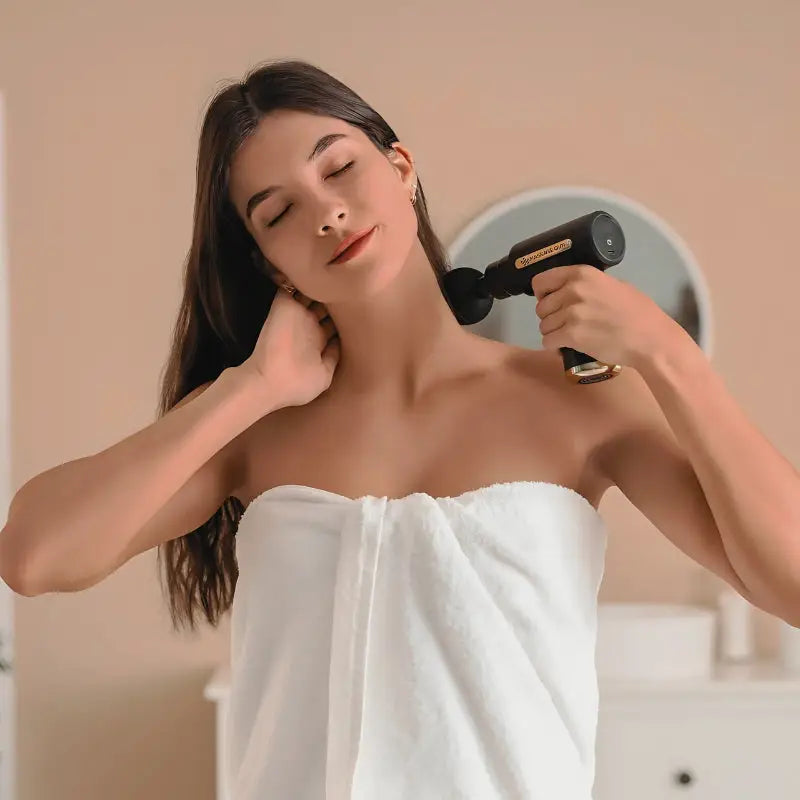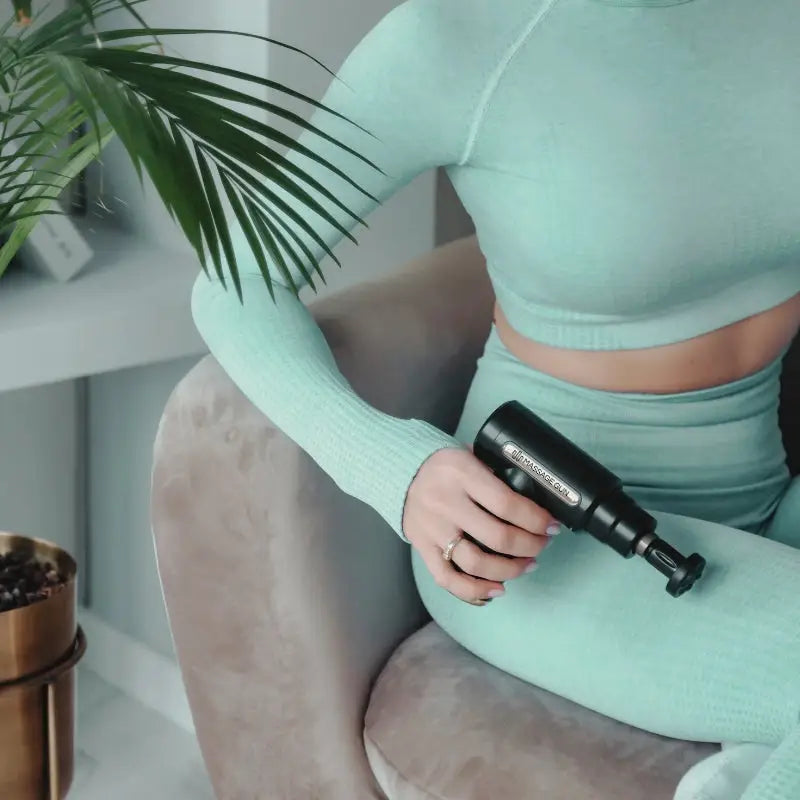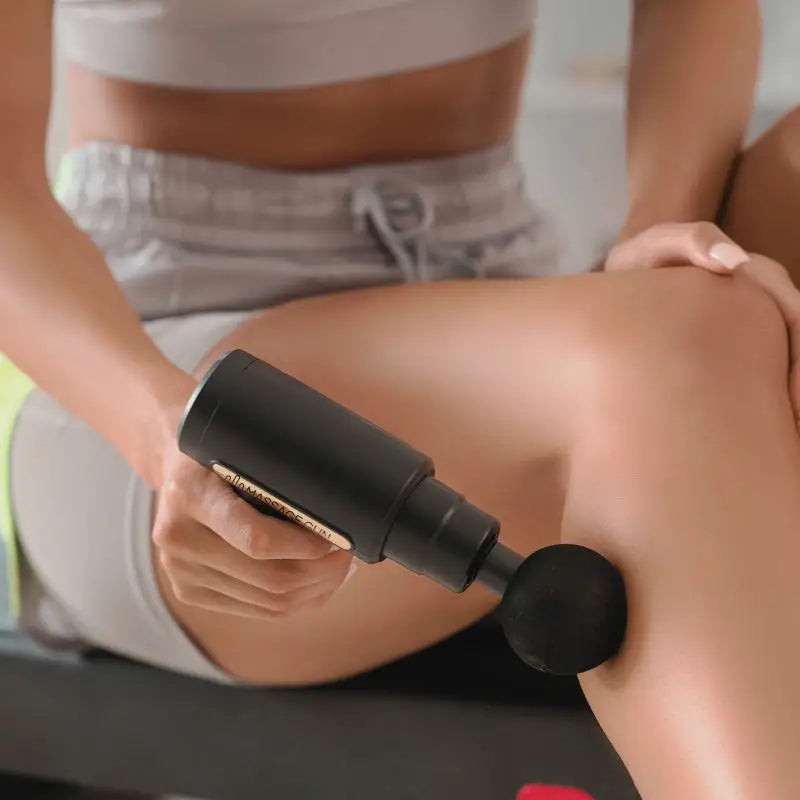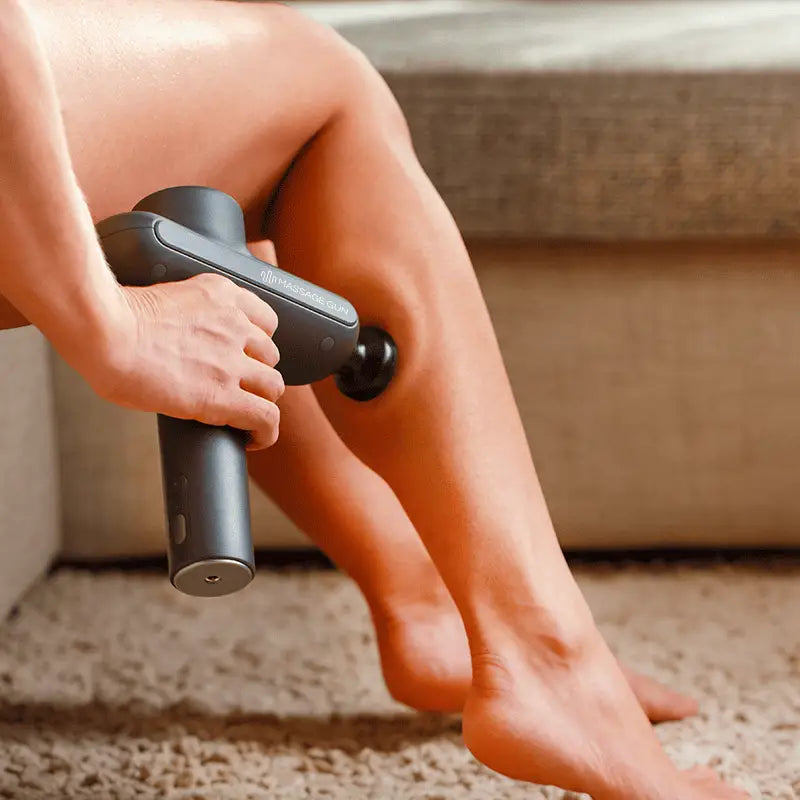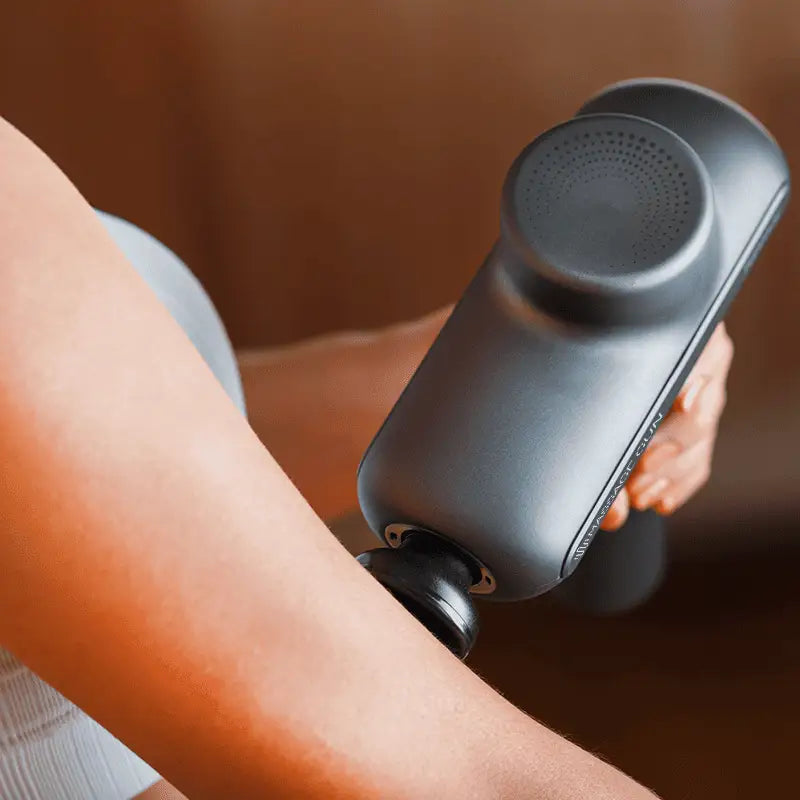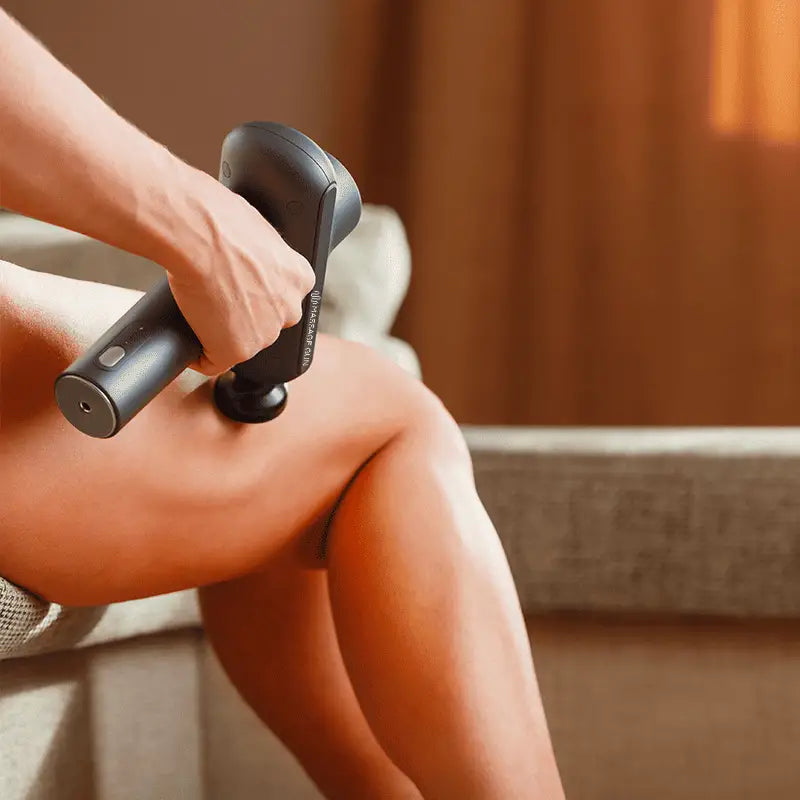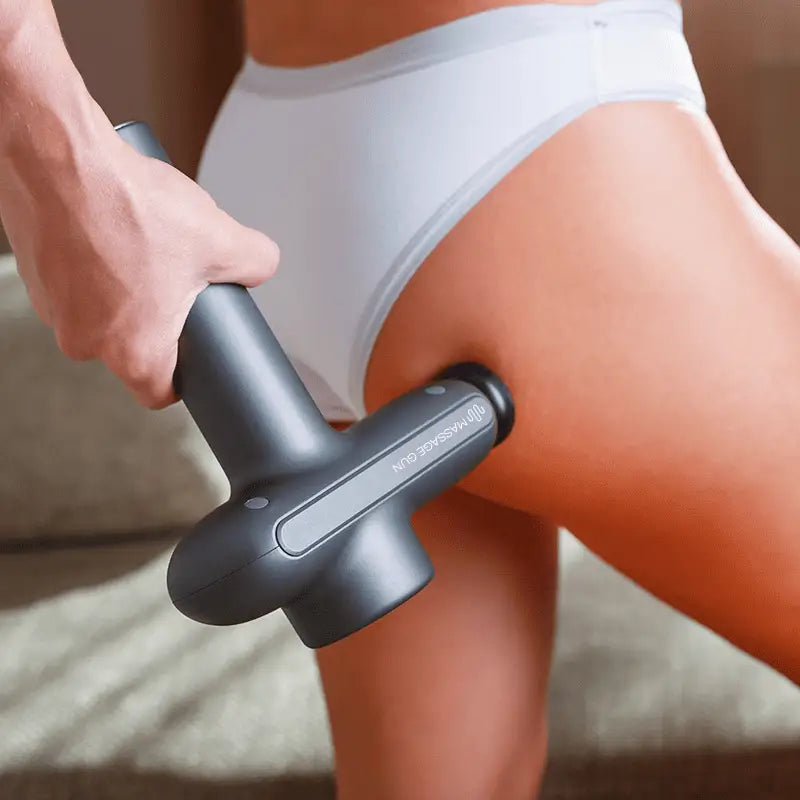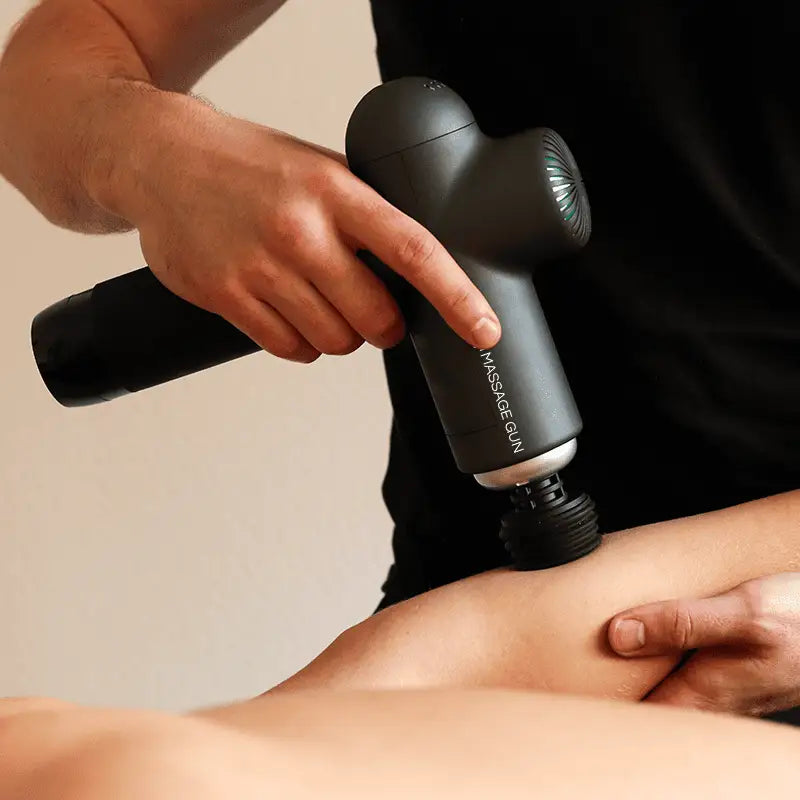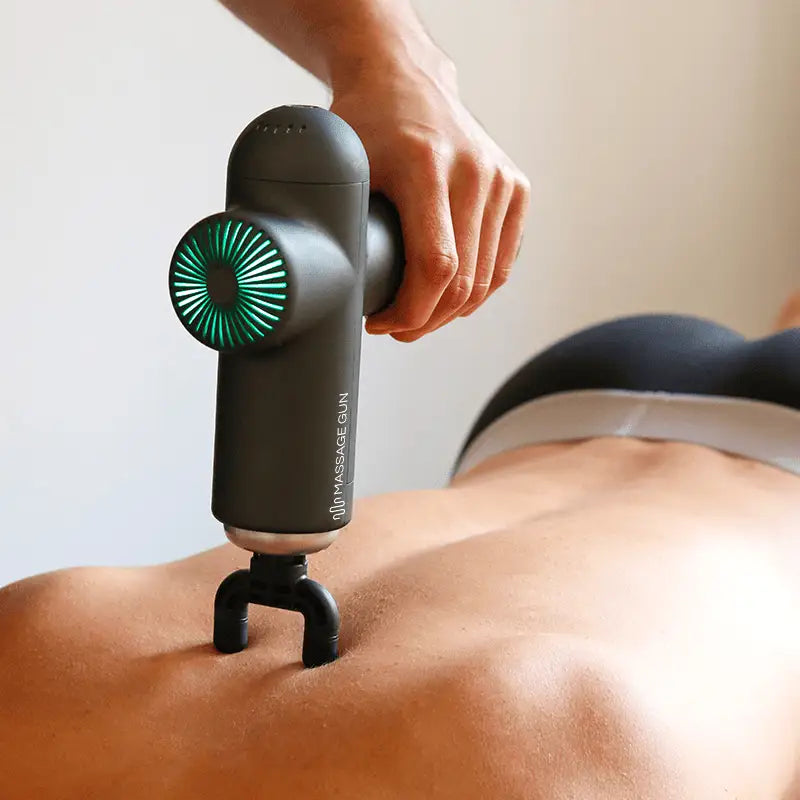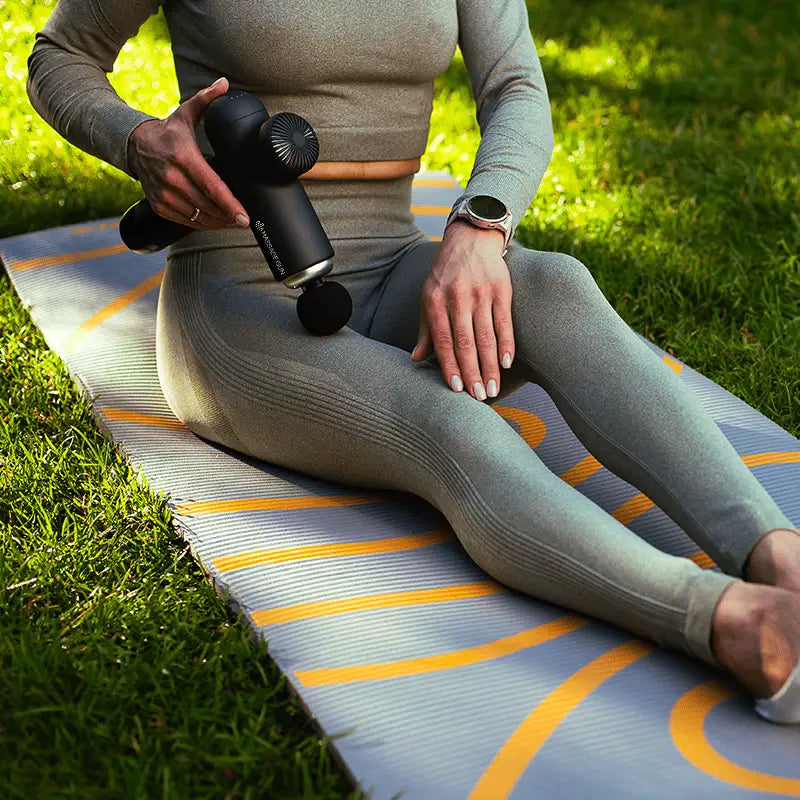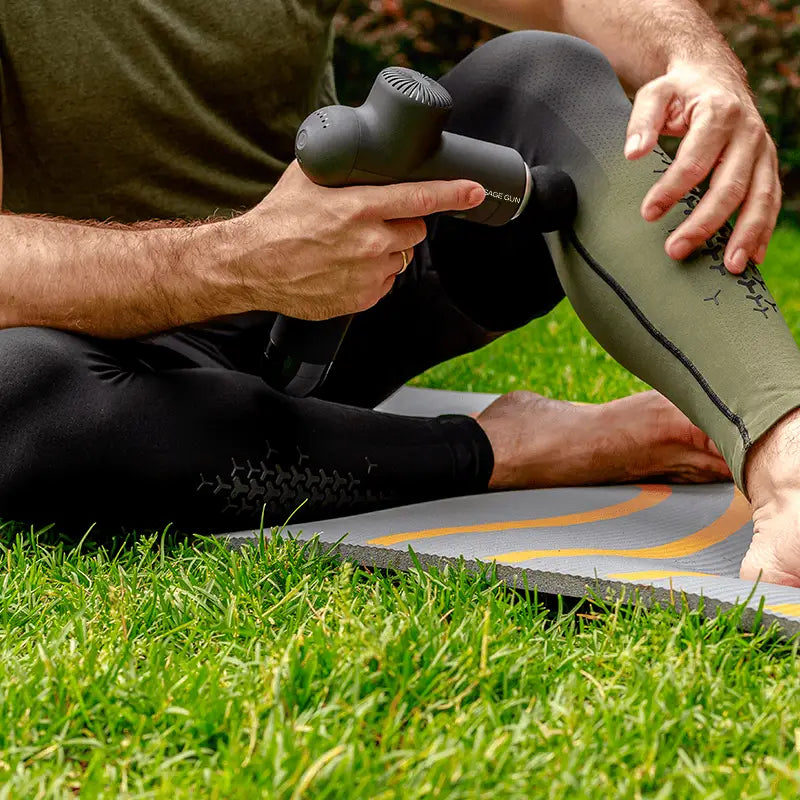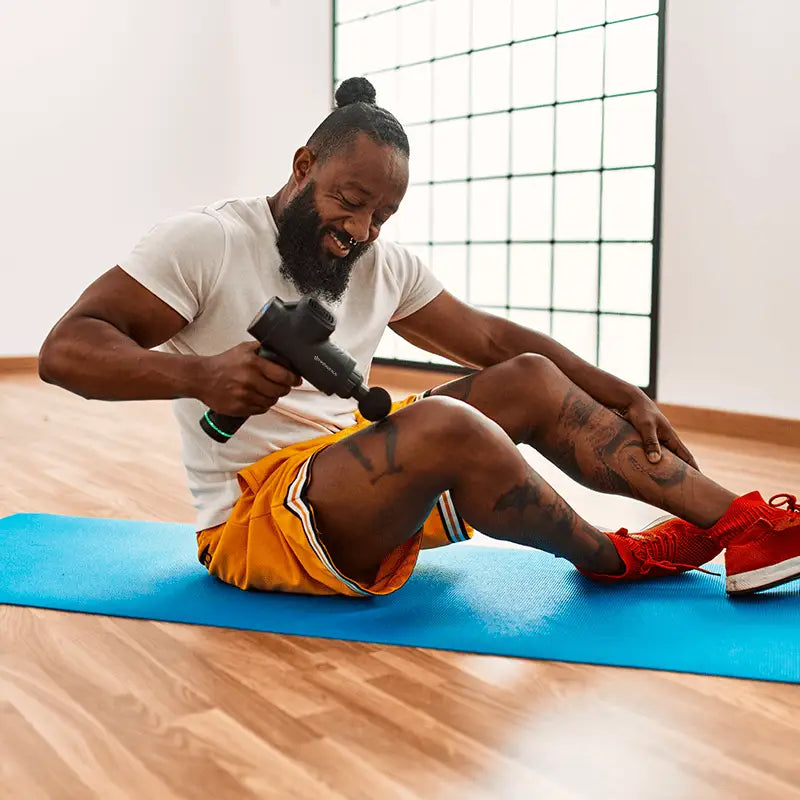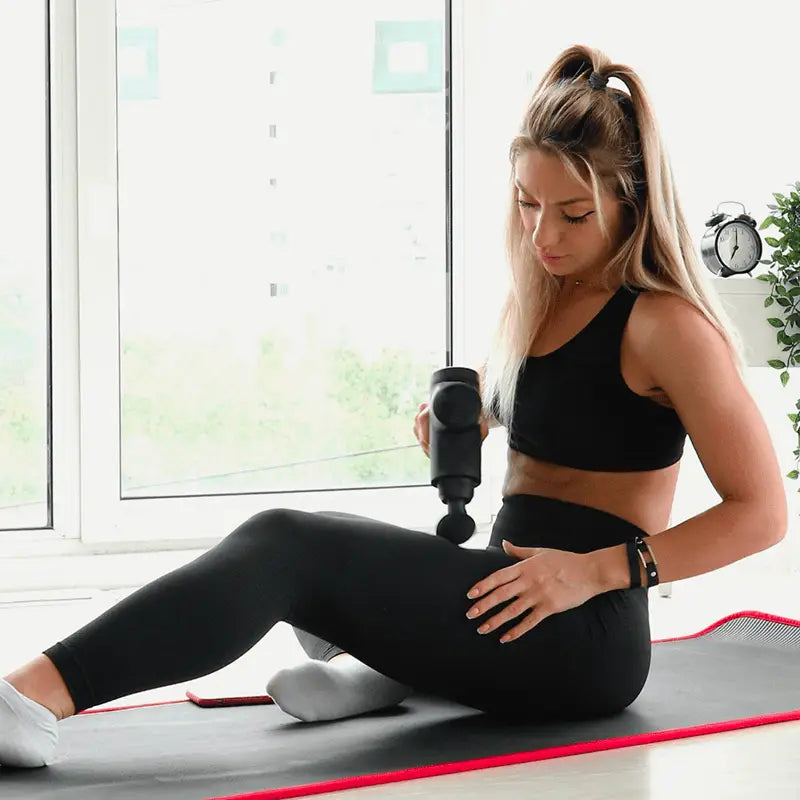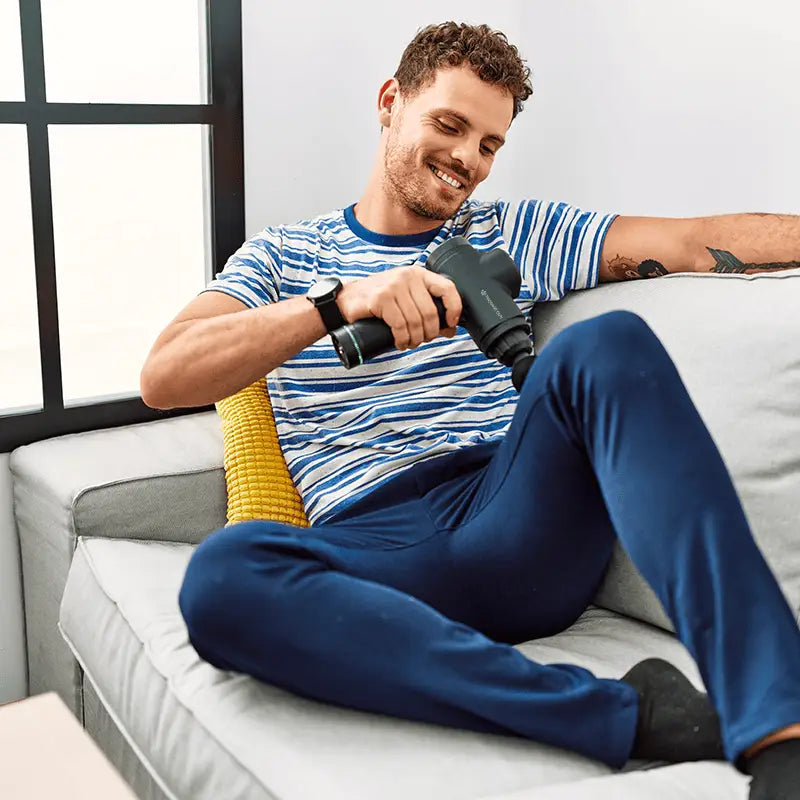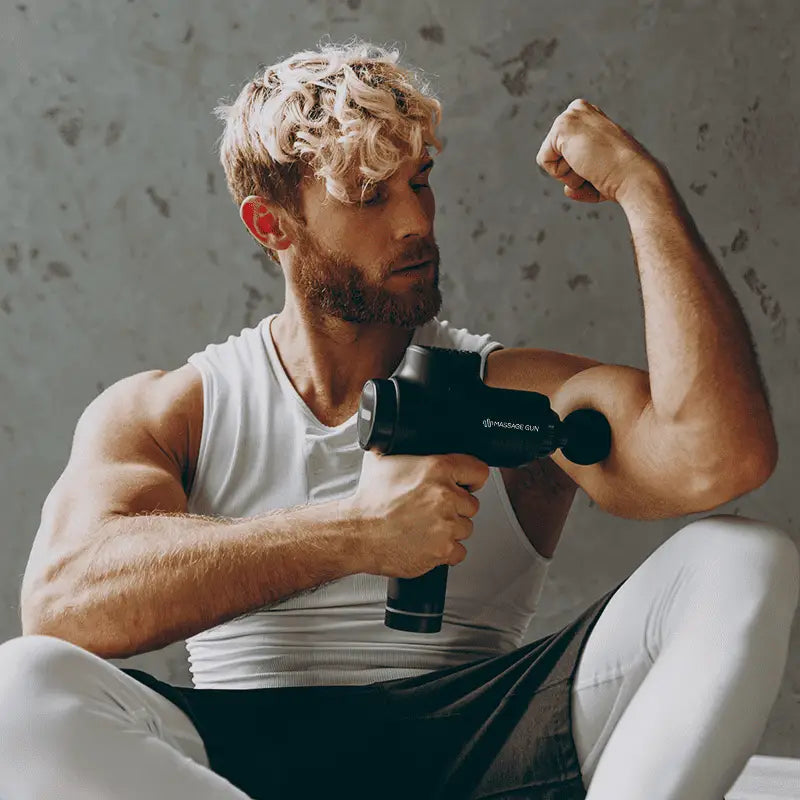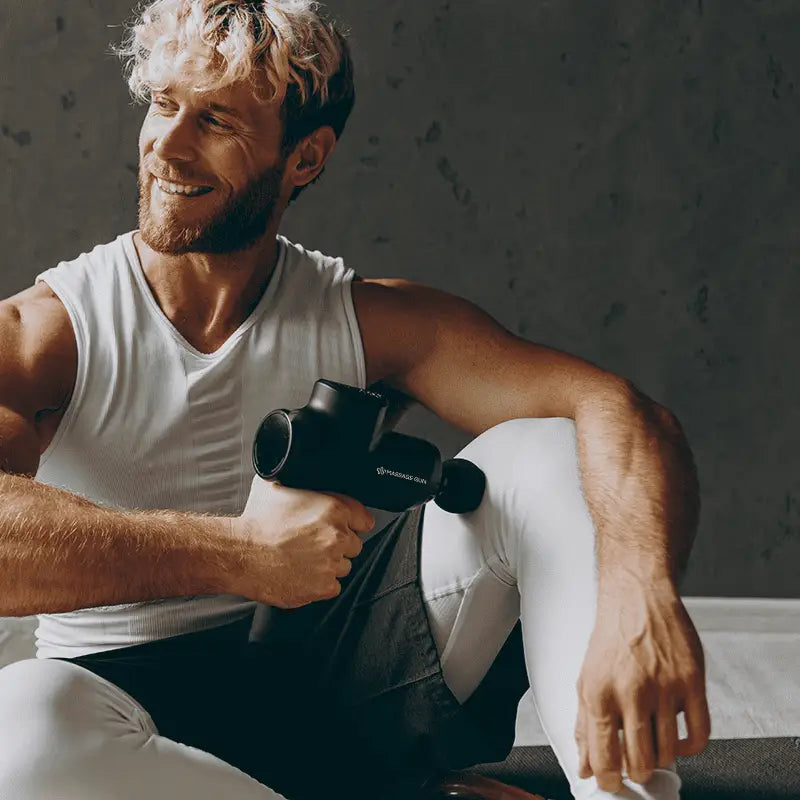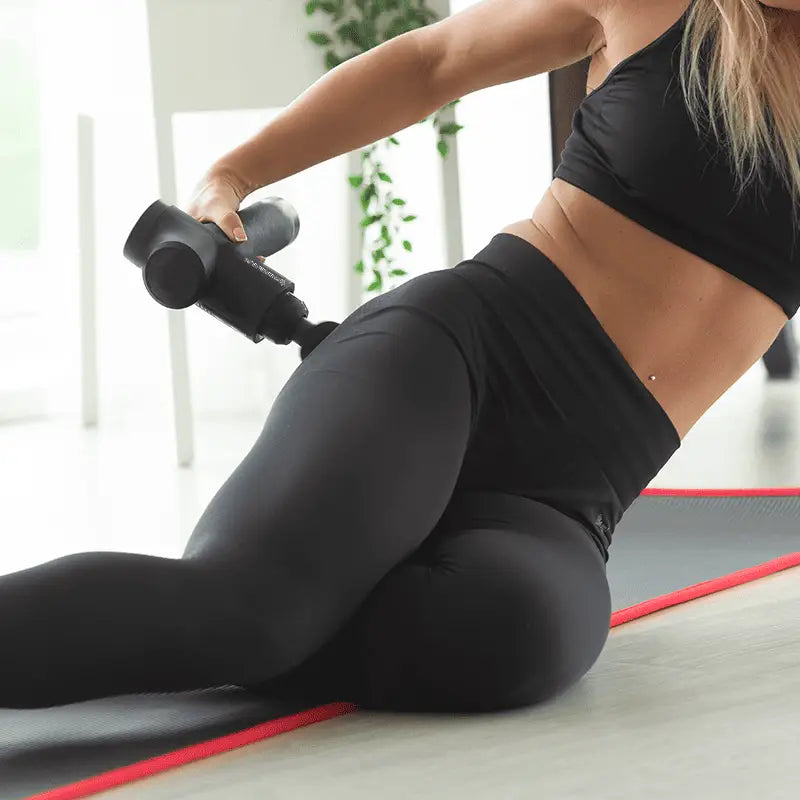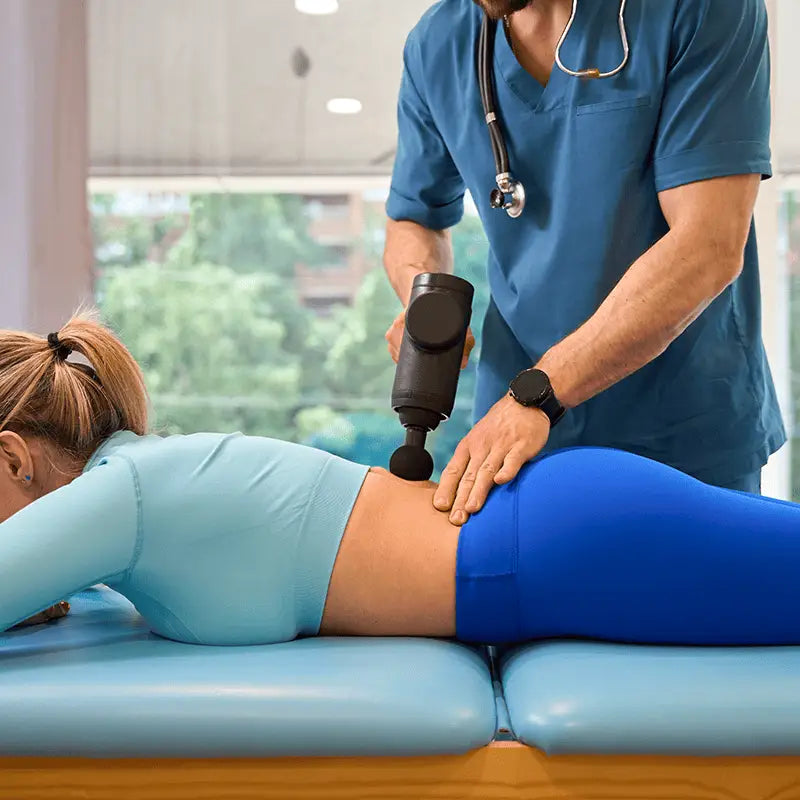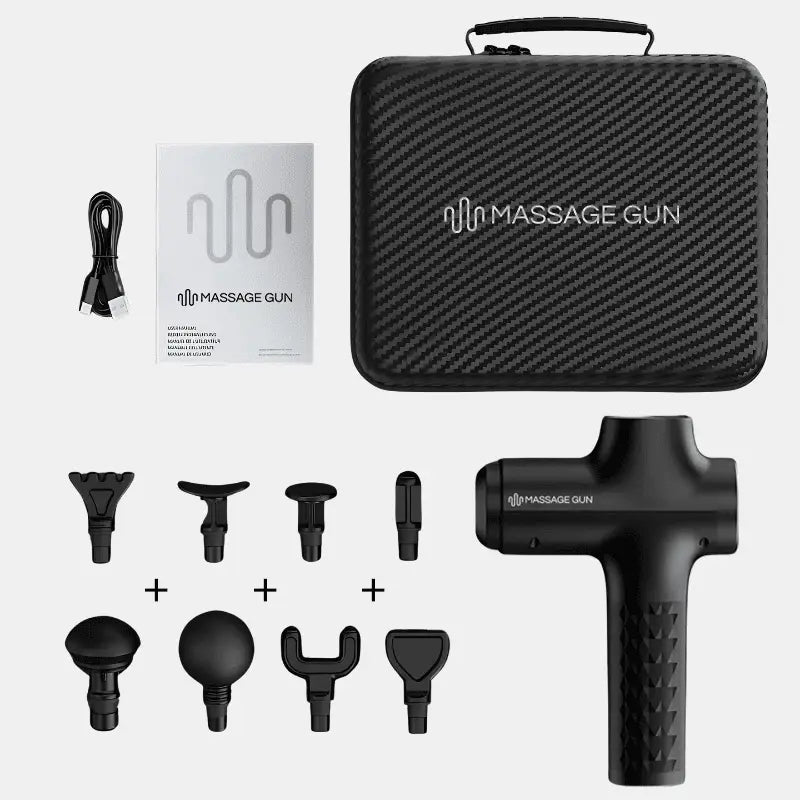Têtes de pistolet de massage : comment choisir la bonne
Choisir le bon accessoire pour pistolet de massage est crucial pour optimiser votre routine de récupération et obtenir les résultats souhaités. Chaque accessoire, qu'il soit à tête sphérique, plate ou ogive, est conçu pour cibler des groupes musculaires spécifiques, appliquant la force et la pression adéquates pour soulager la douleur.
La thérapie par percussion est très efficace pour améliorer la circulation sanguine et réduire les douleurs musculaires. Cependant, choisir l'accessoire adapté à vos besoins est essentiel pour éviter tout inconfort ou blessure . Cet article vous guidera à travers les différents types d'accessoires pour pistolets de massage afin de vous aider à faire le meilleur choix.
Types de têtes de pistolet de massage et leurs utilisations
Tête de massage ronde (à boule)
La tête de massage ronde, également connue sous le nom de tête sphérique, est l'un des accessoires les plus courants et est parfaite pour cibler les grands groupes musculaires tels que les quadriceps, les fessiers et les ischio-jambiers.
Fabriqué en mousse ou en caoutchouc, cet accessoire est doux et confortable, avec une tête rembourrée qui prévient les blessures et soulage la douleur. Particulièrement utile pour soulager les tensions après une séance d'entraînement, il est l'un des meilleurs accessoires pour améliorer la mobilité et la circulation sanguine.
La tête sphérique est compatible avec divers pistolets de massage , comme le célèbre pistolet de massage Renpho. Sa surface douce la rend idéale pour les débutants ou ceux qui préfèrent un massage moins intense.
Elle est également idéale pour soulager les douleurs musculaires dans les zones sensibles. Que vous soyez novice en thérapie par percussion ou que vous recherchiez un accessoire polyvalent, la rotule est un choix judicieux.
Tête de massage plate
L'accessoire plat et rond est conçu pour un massage plus ciblé et profond des tissus et est généralement fabriqué en plastique dur. Il est particulièrement adapté aux groupes musculaires moyens à grands, comme les biceps, la poitrine et le dos, qui nécessitent une intensité plus élevée.
Cet accessoire délivre une force constante sur une surface plus large, ce qui le rend efficace pour dénouer les nœuds des tissus mous et stimuler le relâchement des fascias. De nombreux utilisateurs apprécient cet accessoire plat et rond pour soulager les tensions musculaires importantes.
L'intégration de la tête de massage plate à votre routine peut considérablement améliorer la circulation sanguine et favoriser une récupération plus rapide . Elle est souvent privilégiée par les athlètes et les amateurs de fitness qui ont besoin d'une pression plus profonde pour soulager leurs muscles endoloris.
Lorsque vous utilisez cet accessoire, il est important de faire attention à la pression que vous appliquez pour éviter de provoquer accidentellement une gêne, surtout si les muscles sont inconfortables ou durs.
Tête de massage Bullet (shiatsu)
L'embout ou la tête ogive est un excellent choix pour un traitement précis des muscles endoloris ou des points gâchettes . Sa conception étroite permet d'appliquer une pression profonde et ciblée, idéale pour des zones comme les biceps, les pieds ou les poignets.
Cet accessoire est particulièrement utile pour soulager les tensions musculaires dans les zones plus petites et plus difficiles d'accès, comme autour des omoplates ou le long du processus épineux de la colonne vertébrale.
La tête sphérique est conçue pour la précision et est idéale pour soulager les tensions dans des groupes musculaires spécifiques . Cependant, elle doit être utilisée avec précaution, car une pression excessive sur des zones délicates peut devenir inconfortable, voire inconfortable, si elle n'est pas appliquée correctement.
Le réglage des paramètres de vitesse de votre pistolet de massage peut vous aider à contrôler l’intensité et à garantir les meilleurs résultats pour soulager la douleur.
Tête de massage en forme de U (fourche)
L'accessoire fourche est spécialement conçu pour travailler autour de la colonne vertébrale et du cou, évitant le contact direct avec l'apophyse épineuse et d'autres structures osseuses .
Cet accessoire est idéal pour masser le tendon d'Achille, les mains et les pieds , ainsi que d'autres groupes musculaires longs qui bénéficient de la forme unique de l'accessoire fourche.
La tête en U permet de maintenir une pression sûre et uniforme le long des muscles sans impacter les os. C'est une bonne option pour les personnes souhaitant traiter les raideurs dorsales ou les douleurs cervicales sans risque de blessure.
L'accessoire fourche est particulièrement utile pour améliorer la flexibilité et réduire la tension dans la zone du cou et de la colonne vertébrale , où il est souvent difficile d'atteindre en toute sécurité avec d'autres accessoires.
Comment utiliser correctement les différents types de têtes de massage ?
Directives générales d'utilisation
Lorsque vous utilisez des accessoires de pistolet de massage, la règle générale est de commencer par des réglages de vitesse faibles et d'augmenter progressivement l'intensité. Utilisez toujours l'accessoire le mieux adapté à la zone à traiter.
Par exemple, la tête sphérique est idéale pour les groupes musculaires plus importants, tandis que la tête ogive est idéale pour des zones plus ciblées comme les poignets ou les pieds. Lorsque vous massez le poignet ou le pied, veillez à tenir le pistolet de massage légèrement incliné et à éviter d'appliquer trop de force.
La clé d'une séance de massage réussie est de maintenir une main ferme et de maintenir l'appareil en mouvement pour éviter les douleurs et les blessures . Consacrez du temps à chaque groupe musculaire en fonction de ses besoins, de 30 secondes à 2 minutes par zone. Apprenez comment votre corps réagit à chaque accessoire et adaptez-vous en conséquence.
Précautions et zones à éviter
Certaines zones du corps sont plus sensibles que d'autres et nécessitent une attention particulière lors de l'utilisation d'un pistolet de massage. Évitez de masser directement sur les articulations ou les zones osseuses comme l'apophyse épineuse.
Les accessoires tels que les têtes bombées ou les fourches ne doivent pas être utilisés sur des surfaces dures comme les coudes ou les genoux, car cela peut provoquer une gêne, voire des blessures. De plus, les personnes souffrant de certains problèmes de santé, comme les varices, doivent consulter un médecin avant d'utiliser la thérapie par percussion.
L'accessoire à coussin d'air, souvent fabriqué en mousse souple, est une option plus sûre pour les zones plus sensibles ou pour ceux qui découvrent les pistolets de massage.
Cet accessoire offre un impact plus doux, réduisant ainsi le risque d'appliquer une pression excessive par inadvertance. Soyez toujours attentif à la réaction de votre corps pendant la séance et arrêtez immédiatement toute sensation d'inconfort.
Choisir la bonne tête de pistolet de massage en fonction de la zone du corps
Haut du dos et épaules
Pour masser le haut du dos et les épaules, la boule et l'embout plat et rond sont idéaux. Ces embouts ciblent un large éventail de groupes musculaires et aident à réduire les tensions accumulées après de longues périodes assises ou un effort physique.
La tête sphérique offre une pression plus douce et uniformément répartie, ce qui la rend adaptée au soulagement général des tensions, tandis que la tête plate fournit une pression plus profonde pour le massage des tissus profonds.
Lorsque vous utilisez le pistolet de massage sur le haut du dos, veillez à toujours éviter les zones sensibles comme les omoplates. Si vous souffrez de courbatures, l'embout plat et rond est la meilleure solution pour dénouer les nœuds sans risque de blessure.
Lombes
Pour le bas du dos, utilisez la tête plate ou l'embout coussin pour éviter une pression excessive sur la colonne vertébrale.
La tête plate offre un excellent soulagement de la douleur sans risquer de toucher la colonne vertébrale et favorise une bonne circulation sanguine dans les muscles environnants. Comme toujours, soyez attentif à la réaction de votre corps et ajustez la vitesse si nécessaire.
Jambes et fessiers
La rotule est particulièrement efficace pour les grands groupes musculaires comme les quadriceps, les ischio-jambiers et les fessiers. Elle favorise la circulation sanguine et améliore la récupération, notamment après un entraînement intense.
Si vous vous concentrez sur des zones plus ciblées, comme les mollets, la tête de balle peut être utilisée pour un traitement ciblé, en particulier au niveau des pieds ou le long du tendon d'Achille.
Conseils avancés pour utiliser efficacement les têtes de pistolet de massage
Tenez compte de votre type de corps
Votre morphologie joue un rôle important dans le choix du bon accessoire pour pistolet de massage. Les personnes à la musculature robuste auront peut-être besoin d'accessoires plus fermes, comme la tête plate, tandis que les personnes aux muscles plus délicats préféreront des options plus souples, comme la tête coussinée . Les préférences personnelles de chaque utilisateur détermineront l'accessoire le plus confortable et le plus efficace.
Combinaison d'accessoires pour un traitement complet du corps
Pour un massage complet du corps, commencez par un accessoire général comme la tête sphérique et passez à des accessoires plus spécifiques comme la tête en forme de balle ou de fourche.
L'utilisation de plusieurs têtes de massage lors d'une même séance garantit un traitement complet, ciblant différents groupes musculaires, de la tête aux pieds. Cette méthode peut améliorer la mobilité globale, accélérer la récupération et prévenir les déséquilibres musculaires.
Questions fréquemment posées
1. Quelle tête de pistolet de massage dois-je utiliser pour les muscles endoloris ?
Pour les courbatures, l'embout boule est le choix le plus courant et le plus polyvalent. Cette tête offre une solution puissante et simple pour soulager les tensions des grands groupes musculaires comme les fessiers, les quadriceps et les ischio-jambiers. Fabriquée dans un matériau souple, elle prévient les blessures tout en favorisant la détente et en augmentant la circulation sanguine.
Il est particulièrement utile pour les débutants en massothérapie par percussion, offrant un massage plus doux pour les muscles sensibles. Selon vos besoins, vous pouvez choisir l'accessoire adapté à votre séance, mais la tête sphérique est la solution idéale pour soulager la douleur dans la plupart des cas.
2. Quel est le meilleur accessoire de pistolet de massage pour le cou et la colonne vertébrale ?
La tête de massage en U est idéale pour le traitement de la nuque et de la colonne vertébrale, car elle évite le contact direct avec les vertèbres tout en exerçant une pression sur les muscles environnants. Cet accessoire est particulièrement utile pour réduire les tensions le long de la colonne vertébrale et est recommandé par de nombreux kinésithérapeutes.
Il offre un massage léger mais efficace, idéal pour les muscles sensibles nécessitant une relaxation sans risque de blessure. En ciblant les zones proches des vertèbres, la tête de massage en U améliore la mobilité et optimise l'expérience globale du massage.
3. Comment choisir la bonne tête de pistolet de massage pour le bas de mon dos ?
Pour le bas du dos, l' embout à tête plate est le meilleur choix, car il couvre une plus grande surface et répartit la force uniformément, assurant un massage plus confortable. Cet embout évite la pression directe sur la colonne vertébrale ou les vertèbres tout en soulageant efficacement les muscles environnants.
Si vos muscles du bas du dos sont particulièrement tendus, la tête plate peut offrir l'intensité ciblée nécessaire pour soulager l'inconfort. Veillez à ajuster la fréquence de votre massage en fonction de vos tensions musculaires et à toujours choisir l'accessoire adapté pour éviter les blessures.
4. Quelle tête de pistolet de massage est la meilleure pour le massage des tissus profonds ?
Pour le massage des tissus profonds, la tête sphérique ou la tête plate sont les options les plus puissantes. La tête sphérique est idéale pour cibler les nœuds et les muscles sensibles avec une précision extrême, tandis que la tête plate est idéale pour les groupes musculaires plus importants. Ces deux accessoires permettent d'appliquer une pression efficace, garantissant une pénétration profonde de la force dans les tissus musculaires.
Ces types d'accessoires sont souvent utilisés par les kinésithérapeutes pour soulager les raideurs musculaires et améliorer la récupération. Selon la zone à traiter, vous pouvez alterner entre la tête sphérique pour des zones ciblées et la tête plate pour un massage plus général.
5. Puis-je utiliser la tête sphérique pour un massage complet du corps ?
Oui, l' embout boule est idéal pour un massage complet du corps et peut être utilisé sur différents groupes musculaires. Son matériau souple et sa large surface le rendent idéal pour traiter les muscles importants comme les cuisses, le dos et les épaules. De plus, l'embout boule couvre une large surface, ce qui facilite son utilisation sur différentes parties du corps.
C'est un choix populaire pour se détendre tout en améliorant la circulation sanguine et en soulageant les tensions. Selon votre objectif, cet accessoire peut être combiné avec d'autres pour créer une expérience de massage complète.
6. Quelle tête de pistolet de massage dois-je utiliser pour les petits groupes musculaires ?
Pour les petits groupes musculaires, comme les avant-bras, les poignets et les pieds, la tête ogive est la meilleure option . Cette tête permet d'appliquer une pression précise sur les muscles sensibles, procurant un soulagement ciblé par petites doses. Elle est idéale pour dénouer les nœuds et améliorer la mobilité dans les zones difficiles d'accès.
Ce type d'accessoire est également utile pour améliorer la souplesse et réduire les douleurs. Les kinésithérapeutes recommandent souvent la tête sphérique pour sa capacité à cibler efficacement des groupes musculaires spécifiques.
7. Est-il sécuritaire d’utiliser le pistolet de massage sur les articulations et les os ?
Il est déconseillé d'utiliser un pistolet de massage directement sur les articulations et les os, comme les vertèbres . Privilégiez plutôt les muscles environnants en exerçant une légère pression et en utilisant des accessoires comme la boule ou la tête de massage en U. Ces accessoires sont conçus pour appliquer une pression sur les muscles sensibles tout en évitant tout contact direct avec les os ou les articulations.
Cette approche vous permet de bénéficier des bienfaits de la thérapie par percussion sans risque de blessure. Choisissez toujours l'accessoire adapté à la zone à traiter et consultez un kinésithérapeute en cas de doute.
8. Quel est le meilleur accessoire pour améliorer la mobilité et la flexibilité ?
Pour améliorer la mobilité et la souplesse, l'embout sphérique et la tête de massage en U sont les choix les plus efficaces. La tête sphérique agit sur les muscles les plus volumineux, favorisant la relaxation et améliorant la circulation sanguine, tandis que la tête de massage en U cible la colonne vertébrale et les muscles environnants, améliorant la souplesse sans exercer de pression directe sur les vertèbres.
L'utilisation régulière de ces accessoires peut améliorer considérablement l'amplitude des mouvements et contribuer au maintien de la santé musculaire. Selon vos besoins spécifiques, alterner entre ces accessoires peut vous offrir une expérience de massage complète.
9. À quelle fréquence dois-je modifier les réglages de vitesse des différentes têtes de pistolet de massage ?
La fréquence d' ajustement de la vitesse dépend de la tête de l'accessoire et du groupe musculaire sollicité. Pour les accessoires plus souples, comme la tête sphérique ou le coussin d'air, des vitesses plus faibles sont recommandées pour les muscles sensibles. Pour les accessoires plus durs, comme la tête sphérique, vous pouvez augmenter la vitesse pour exercer une pression plus profonde.
Ajuster la vitesse en fonction de la zone à traiter garantit de meilleurs résultats et prévient l'inconfort. Les kinésithérapeutes recommandent de commencer par une force plus faible et d'augmenter progressivement si nécessaire.
10. Puis-je utiliser plusieurs accessoires lors d’une même séance de massage ?
Oui, utiliser plusieurs têtes de massage lors d'une même séance peut améliorer votre expérience globale de massage . Par exemple, vous pouvez commencer par la tête sphérique pour les muscles plus volumineux, puis passer à la tête sphérique pour une pression plus puissante et ciblée sur les muscles sensibles.
Cette combinaison d'accessoires permet un traitement complet, garantissant un soulagement à la fois général et ciblé. Bob et Brad, experts reconnus dans le domaine, recommandent également d'alterner les accessoires pour optimiser la récupération.
Cette méthode permet de cibler facilement des zones spécifiques tout en évitant la surutilisation d’un seul accessoire de tête.



